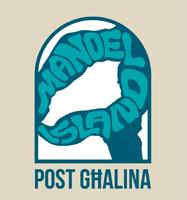Bird’s Eye View
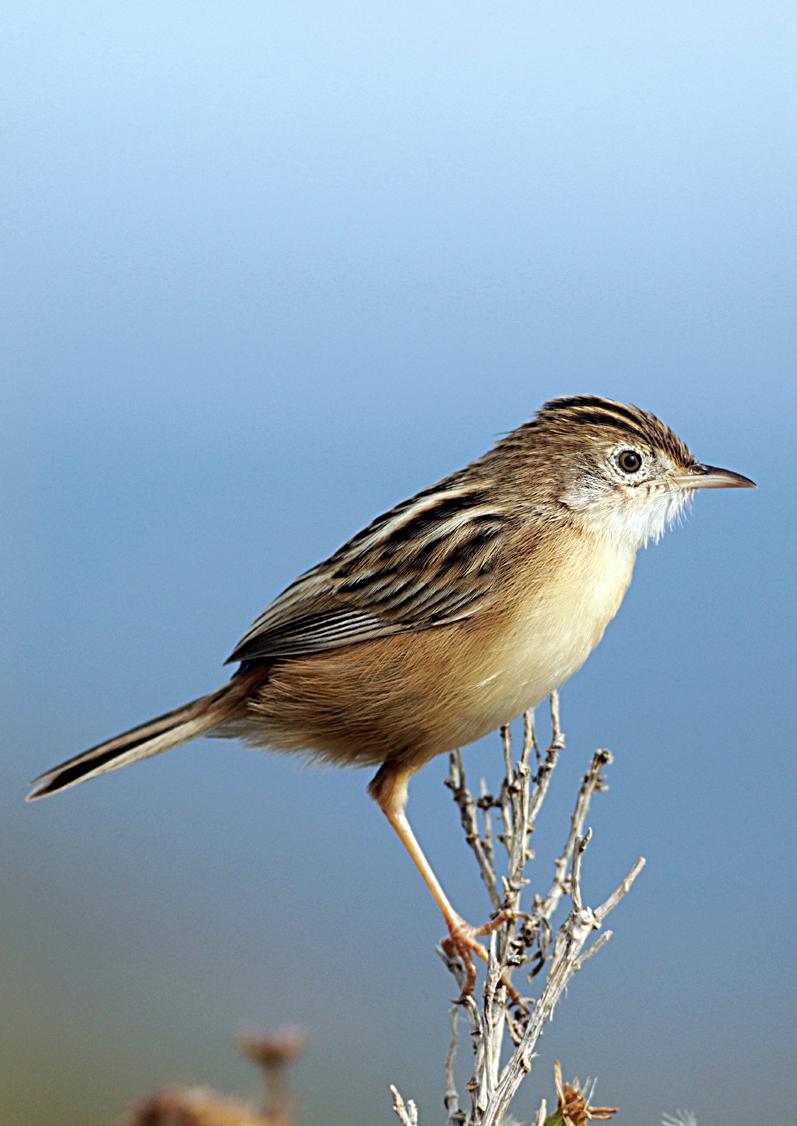
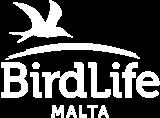





Over 29,000 Maltese citizens have come together to demand that Manoel Island be turned into a public park, not handed over to large-scale private development. The petition, spearheaded by environmental NGOs including BirdLife Malta, is a powerful reminder that the public wants green open spaces, not more concrete; and that civic action can drive real change.
At the time of writing, both Government and Opposition – initially aligned with the developers’ plans – are now feeling the pressure to do what is right. Responding to public outcry, both sides have shifted their positions and begun supporting the vision for a public park. This is a clear sign that democracy is alive and that collective voices can challenge entrenched interests.
We’ve seen this before, such as when a planned road through a sensitive wetland at Għadira was halted thanks to BirdLife Malta,
Feb 2025
CRIME: Trapper trapping for Golden Plover in close season (Siġġiewi, Mar 2024). PUNISHMENT. Trapper fined €3500 + lifetime ban from trapping.
March 2025
CRIME: Two hunters assaulting and injuring two BirdLife Malta staff members (near Magħtab, Mar 2022). PUNISHMENT: Each sentenced to 1 year conditional discharge.
March 2025
CRIME: Trapper trapping for Ortolan Bunting in close season (Mtaħleb, Sep 2022). PUNISHMENT: Trapper fined €1200 + 3 year ban from trapping.
March 2025
CRIME: Trapper trapping on unregistered site (Ħal Far, Nov 2021). PUNISHMENT: Trapper fined €800 + 2 year ban from trapping.
May 2025
CRIME: Trapper trapping with illegal mist net (Ħal Għaxaq, Nov 2023). PUNISHMENT: Trapper fined €5000 + lifetime ban from trapping.
leading to the creation of Malta’s first nature reserve. A similar story happened at Majjistral Park, where a proposed golf resort gave way to the setting up of another public park.
Manoel Island stands at a crossroads. The choice is between public benefit or private gain, nature or concrete, future vision or shortterm profit.
I hope that by the time you read this piece, the decision will have been made in favour of open spaces for the general public – a victory not just for environmentalists, but for every citizen who believes in a greener, fairer Malta.
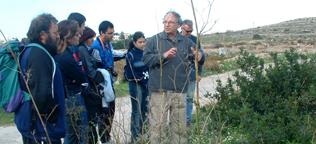
Edwin Lanfranco, a leading Maltese botanist, passed away on 3 June 2025. He will be fondly remembered for his generosity and vast knowledge of local flora. To budding naturalists, he was a walking Wikipedia. He often joined BirdLife Malta youth leader outings as a botany expert, enriching our excursions with anecdotes about plant life. He also contributed to BirdLife publications, and was our botanical consultant when we were planning the creation of Foresta 2000. The naturalist world has lost a true champion. We extend our heartfelt condolences to his family and loved ones.
Editorial Board Antonia Micallef (Editor), Victor Falzon (Naturalist & Field Teacher), Cinzia Mintoff (Graphic Design & Digital Media Communication Officer), Nadia Sodano (Communication Assistant), Yusuf Gamal (Photography and Film Production Assistant), Nastasya Koroleva (Volunteers & Events Coordinator), Tamar Antia (Events & Outreach Assistant), Giada Lampitelli (Education Officer).
BirdLife Malta Council Darryl Grima (President), Caldon Mercieca (Vice-President), Norman Chetcuti (Treasurer), Denise Casolani (Council Secretary), James Aquilina, Miriam Camilleri, Eurydike Kovacs, Paul Portelli, Kathleen Psaila Galea, Raphael Soler, Steve Zammit Lupi (members)
Senior Management Team Mark Sultana (CEO), Nicholas Barbara (Head of Conservation), Mark Gauci (Head of Land Management), Stefania Papadopol (Head of Public Engagement), Antonia Micallef (Public Engagement Executive), Gabriella Seguna Galea (Finance Manager), Manuel Mallia (Salina Park Manager), Manya Russo (LIFE PanPuffinus! Project Manager), Janet Borg (Office Coordinator)
Design Cinzia Mintoff
Printed at Poultons on sustainably sourced paper
Front cover photo Zitting Cisticola by Aron Tanti Reg. Vol. Org. VO/0052 © 2025 BirdLife Malta. All rights reserved.

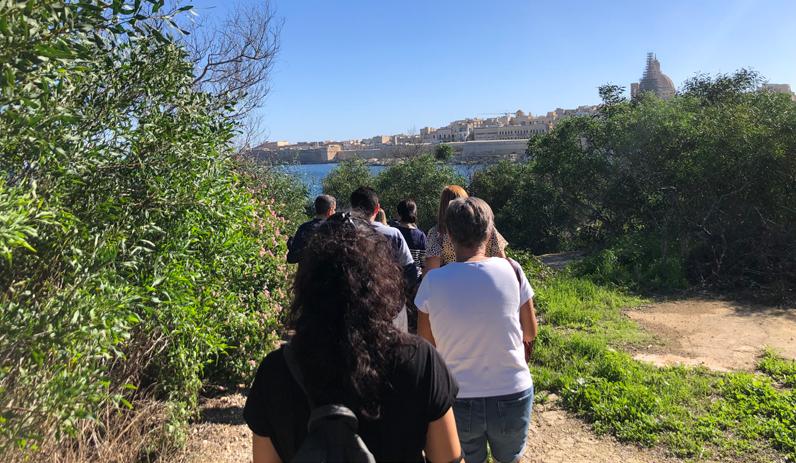
Seven environmental NGOs have welcomed recent shifts in position by both Government and Opposition in favour of protecting Manoel Island. The Opposition’s endorsement of a petition signed by over 29,000 citizens marks growing momentum to return the island to the public. The NGOs highlight past examples where development plans were reversed and the sites returned to nature. They welcome the Prime Minister’s invitation to dialogue and call on the Government to protect Manoel Island from development and designate it as a park for all to enjoy.
Signatories: Azzjoni: Tuna Artna Lura, BirdLife Malta, Din l-Art
Moviment Graffitti, Nature Trust – FEE Malta.

The strategy to dilute Malta’s bird protection laws continues. On the Ornis Committee, BirdLife Malta was again the only voice defending birds, as a proposal to reduce fines for illegal hunting was approved. This comes amid rising illegalities and weak enforcement, with Malta already facing EU infringement procedures. Shockingly, the Environment and Resources Authority (ERA) supported softer fines that benefit lawbreakers rather than birds. More weakening is expected, including a proposal to let hunters approach the coast by boat. BirdLife Malta will continue to oppose this constant erosion of bird protection laws.
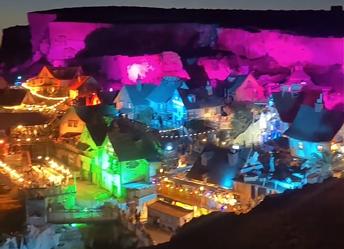
pollution
BirdLife Malta condemns the light and sound show held at Popeye Village in late May, which disturbed a nearby seabird colony. Yelkouan shearwaters are highly sensitive to light, and their chicks risk starvation when adults are disturbed. Despite being alerted by the Malta Ranger Unit with real-time video evidence, ERA failed to act immediately. Notices to Mariners 9 and 10 of 2023 prohibit light pollution year-round. BirdLife Malta urges stricter enforcement and updated regulations.
BirdLife Malta and nine other NGOs are appealing the Planning Authority’s approval of large-scale tourism development on Kemmuna despite serious unresolved environmental concerns. Kemmuna is supposedly a Special Protection Area, a Special Area of Conservation, Natura 2000 Site and Bird Sanctuary.
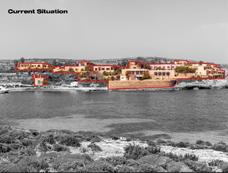
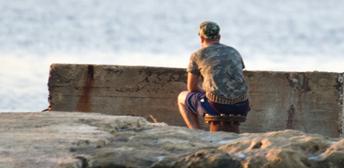
Rabbit hunting season opened on 1 June, with 3,000 hunters and six months to hunt. In 2024 only 62 rabbits were reported, i.e. one per 48 hunters. So, what’s really being targeted? Since 2019, rabbit hunting has been extended to public land and coastal areas. A 2022 amendment to the law means hunters caught illegally shooting birds lose only their bird-hunting licence, but not their rabbit-hunting one. Bird protection laws are heading down the rabbit hole. Report illegal hunting. Call 119 or contact BirdLife Malta. Speak to your MPs.
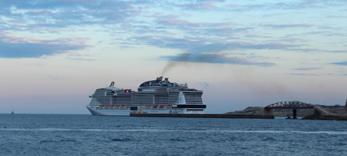
BirdLife Malta celebrates the official start of the Mediterranean Sulphur Emission Control Area (SECA) on 1 May 2025, a major win following years of campaigning. This move should cut sulphur emissions by 80%, improving air quality and public health. As a key player in securing SECA, BirdLife Malta is now driving for the next step: a Nitrogen Oxide Emission Control Area (NECA) to further reduce harmful ship pollution and protect coastal communities. This continued advocacy aims to bring the Mediterranean in line with stricter standards already applied in the Baltic and North Seas.
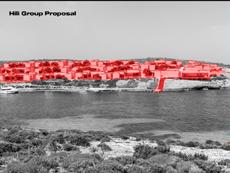
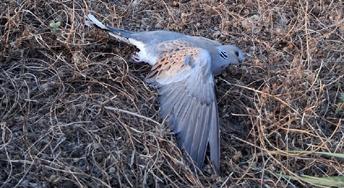
Turtle-dove found in Miżieb on 18 April 2025, following intense illegal hunting
BirdLife Malta’s Spring Watch 2025 revealed over 200 illegal hunting incidents, including widespread use of electronic bird callers, hunting near residences and shooting of protected species. Despite requiring seven officers per 1,000 hunting licences, enforcement was minimal, the lowest ever recorded. Turtle-dove hunting peaked illegally before the official season, with the national quota reached early. BirdLife Malta recovered 14 protected birds with confirmed shotgun injuries, while others were seen flying wounded. Unlawful trapping disguised as ‘research’ continued without legal basis. Malta remains under EU scrutiny as the government prepares a report amid ongoing breaches of the Birds Directive.
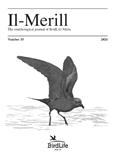
Il-Merill is BirdLife Malta’s ornithological journal, in publication since 1970. Number 35 is now available online, featuring a long-term study on duck migration and the first record of Swinhoe’s storm-petrel. We welcome contributions for next issue. Submissions from students and new authors are especially encouraged. For details, email
info@birdlifemalta.org and martin.austad@birdlifemalta.org with the subject line ‘il-Merill 36 submission’.
Photos by: BirdLife Malta , Moviment Graffitti, Malta Ranger Unit, John Middleton, Veerle Van Werde
WORDS Antonia Micallef BirdLife Malta Public Engagement Executive
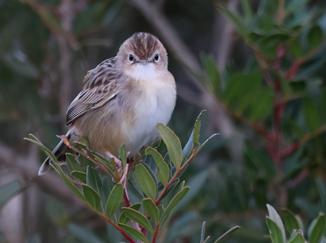
MALTESE NAME: Bufula tal-Imrewħa
SCIENTIFIC NAME: Cisticola juncidis
LENGTH: 10–11 cm
IUCN CONSERVATION STATUS: Least Concern
LOCAL STATUS: Native and largely sedentary
The Zitting Cisticola is a common bird in the Maltese countryside, though rarely seen on Kemmuna. It is highly visible in spring and summer, but more secretive during winter.
It is the only European representative of a mainly African warbler family. Native to Southern Europe, tropical Africa, India, Southeast Asia, and northern Australia, it has over 15 races across its breeding range. Nesting was first recorded in Malta in 1973 in Pwales and has since spread across most rural areas. Its diet consists mainly of invertebrates such as spiders, caterpillars and grasshoppers, but also includes small seeds and berries like lentisk.
Zitting Cisticolas are polygamous. Males defend territories and may attract up to five females. Nesting starts as early as midFebruary and can continue into November, though it peaks in May–June.
Males build the outer layer of a vertical, tube-like nest (approx. 20 cm) using cobwebs and plant fibres; females complete the lining before laying 2–6 pale, often speckled eggs. These hatch in about 12 days. The female incubates and raises the chicks alone. The young fledge after 12–15 days and remain dependent for another 10 days or so, after which the female may nest again, sometimes with a different male. The species is highly prolific: a female can raise up to three broods annually. Astonishingly, a young female bird can herself breed within 40 days of hatching.
Males typically build up to six nests (sometimes as many as 18), as more nests increase the chances of attracting mates. However, nearly half of all nests fail, mainly due to predation by Western whip snakes, rats and feral animals, or through agricultural activity such as harvesting. The species is also vulnerable to harsh winters and climate change.
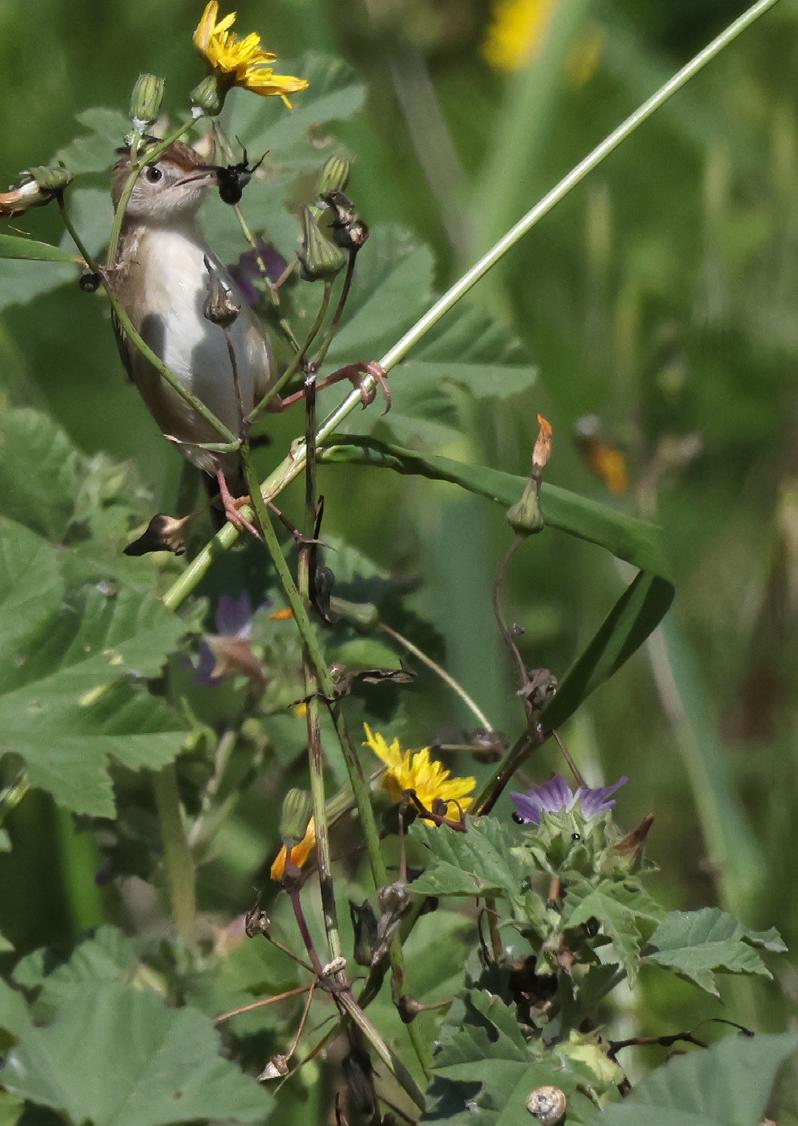
CALL: Song a continuous repetitive tsip call, which the male utters during an undulating display flight 5–15 m above the ground, circling over his territory. Other calls include a fast succession of kfik-kfik-kfik and a short, sharp tzi. Characteristic song synonymous with the arrival of spring in Malta.
HABITAT: Open country, farmland, and wetland margins with the presence of grasses, rushes and Phragmites reeds. Largely avoids trees.
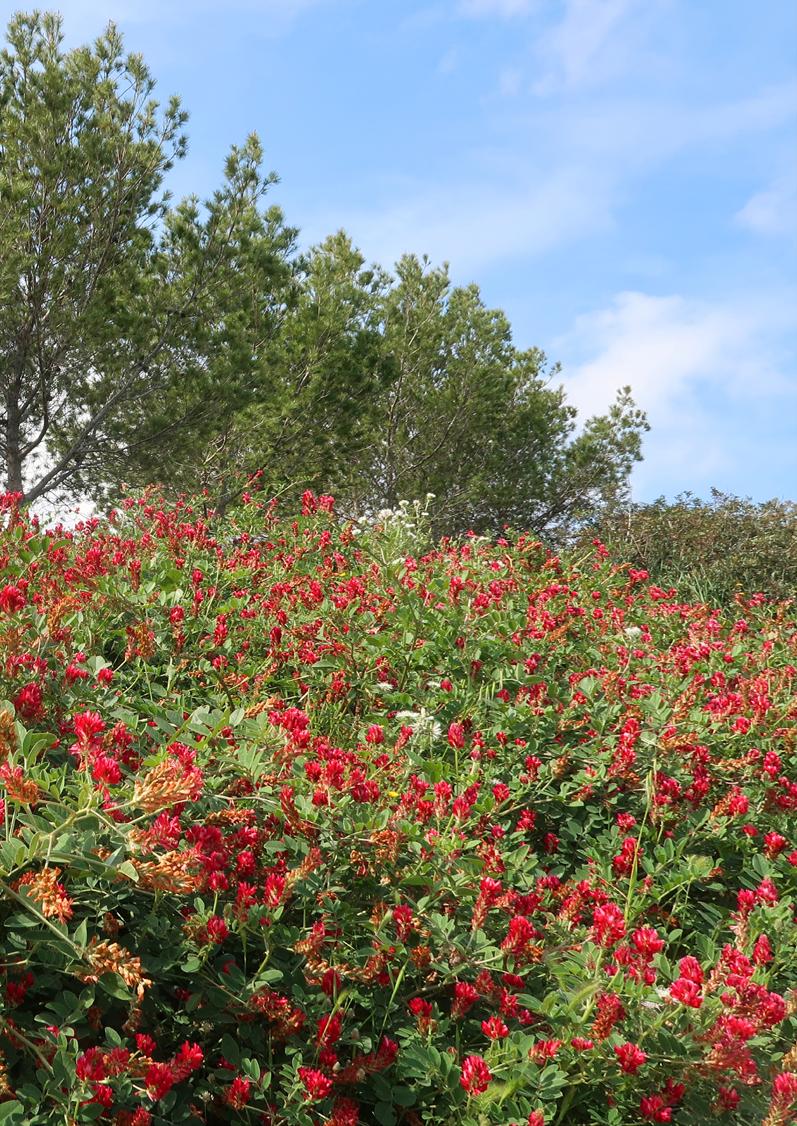


Qattus Telescopus fallax
One of the three lovely snake species so far recorded from Foresta 2000 is the cat snake. It is so called not because it has moggies for lunch, but because of its vertical cat-like pupils. It’s slender and grey with dark brown patches, and can grow to about a metre, though never thicker than your thumb. Unlike the other three snake species that occur in Malta, cat snakes are active even at night, hunting mice and other reptiles like geckoes. Like all our reptiles, they’re harmless to humans, and they’re also protected by law – maybe our way of saying thanks for the free pest control service they provide by conveniently snacking on rodents!
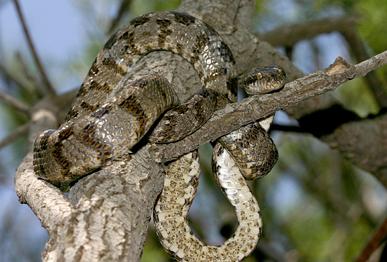
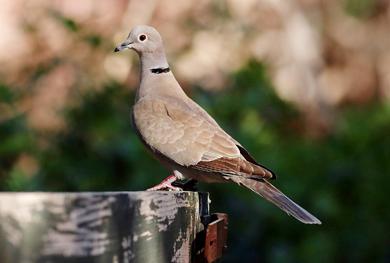
Gamiema tal-Kullar Streptopelia decaocto
The list of birds that nest in Malta is embarrassingly short. Well, little wonder: a dry, overcrowded and overdeveloped speck of land (with ten thousand trigger-happy hunters) is no bird paradise. So it’s understandable that us bird lovers celebrate a new species that nests despite the odds. Twenty-odd years ago the Collared-dove was a rarity here, but in 2003 a pair nested in Mellieħa and a small colony established itself there. Within a few years, the population spread to other parts of the country, not least Foresta 2000. The gentle triple-note call of this graceful pink-grey dove has become one of the nicer sounds in many of our neighbourhoods.
Żnuber Pinus halepensis
The Aleppo Pine is a lovely, bright-green evergreen tree. It is popularly grown in gardens, afforestation areas and along roads – and it’s quite native, despite the name. Before humans arrived, it probably grew wild and thick in several parts of the islands. But people came, chopped down all the woodland and no original pines remain today (the last possibly wild tree, a magnificent specimen at L-Imġiebaħ, was burnt and destroyed in 2009). In the 2000s several thousand young pines were planted at Foresta and they are now slowly maturing, in places even regenerating naturally. Yes, wild pines are growing again in Malta. With a little help from their BirdLife friends.
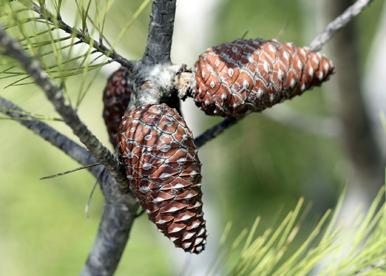
WORDS Victor Falzon Naturalist and BirdLife Malta Field Teacher
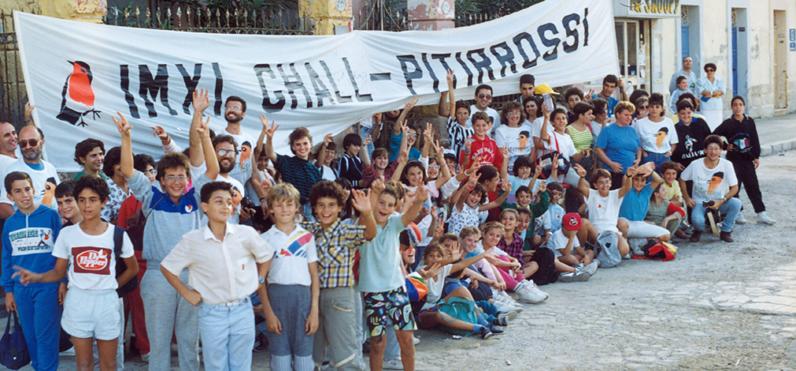
1990.
In 1962, a group of passionate nature enthusiasts set up BirdLife Malta, then known as the Malta Ornithological Society (MOS). Their vision was to protect wild birds and their habitat. Refusing to stand by as the island’s natural heritage was endangered, MOS volunteers took action. Their efforts led to the first milestone in 1966: the saving of Għadira wetland from destruction, later to become our first nature reserve.
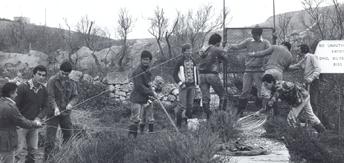
Over the years, thanks to its volunteers, BirdLife Malta achieved major conservation success, such as the protection of important ecological sites and increased action against illegal trapping and hunting. Every year Spring Watch and Raptor Camp bring together Maltese and international volunteers to monitor bird migration and to report illegal hunting. This ongoing surveillance has led to many court cases, and has raised public awareness.
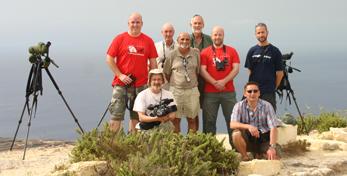
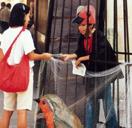
Another vital contribution from volunteers is scientific bird ringing. Since 1965, BirdLife Malta ringers have contributed to ornithological research. Ringing provides insights into bird populations and migration patterns, confirming Malta’s strategic importance along the Mediterranean migration flyway.
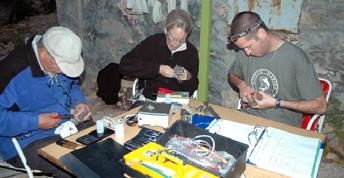
Since 1969 a band of volunteer youth leaders have organised regular activities for BirdLife Malta’s growing ranks of young members. These included talks, hikes, visits to nature reserves and weekend camps. Several of those young members grew up to be leading activists and environmentalists.
Thanks to the efforts of volunteers past and present, BirdLife Malta stands today as a symbol of what can be achieved when ordinary people unite for an extraordinary cause.
BirdLife Malta has continued to grow and evolve, adapting to new environmental challenges and expanding its reach. Longstanding initiatives have flourished while new needs have emerged, requiring fresh support. BirdLife Malta welcomes anyone passionate about protecting nature to join our mission
Bird Rehab Centre: Would you like to help care for sick or injured birds and support their recovery so they can return safely to the wild? Our Rehab Centre Coordinator is currently seeking volunteers to assist with bird care.
Schedule: One volunteer per day, from 9am to 1pm (excluding weekends).
Note: Duties vary depending on the centre’s needs and season. Training: Provided.
Rescue Team: Wild birds may require urgent assistance in various locations across Malta and Gozo. We are building a network of volunteers to help collect injured birds and transport them to our care.
Requirements:
• Active residents, especially in Gozo
• Willingness to learn basic bird-handling techniques
• A personal vehicle is preferred for rapid response Training: Provided.
Reserve Maintenance: Do you enjoy working outdoors? Join our team maintaining Malta’s nature reserves.
Requirements:
• Clearing paths
• Repairing structures
• Planting native vegetation
• General habitat upkeep using tools (shovels, rakes, brushes) Training: Provided.
Team size: 3–5 people
Schedule: On a needs basis – we’ll contact you when support is needed.
Woodworkers and Carpenters: Are you skilled in woodworking? Help us build and maintain wooden structures for our wildlife gardens and reserves.
Requirements:
• Building signs, benches, and other wooden items
• Own tools recommended (limited equipment available on site)
Photographers and videographers: Support our outreach and media by capturing Malta’s nature and our events.
Requirements:
• Photographing/filming events
• Editing content for social media and awareness campaigns
• Your own camera, or smartphone with high quality camera. Our events take place throughout the year, so your support is welcome at times that suit you.
School Support: Do you want to inspire the next generation of environmental stewards? Dinja Waħda needs enthusiastic volunteers to support teachers and students during school hours.
Requirements:
• Assisting educators with environmental activities
• Helping integrate nature-based learning into lessons
• Supporting outdoor sessions
• Basic background in nature/environment (education or personal experience)
• Availability during school hours (mornings mostly)
Benefits:
• Participation in unique events
• Hands-on experience
• Professional development
• Community and networking
• Impact on biodiversity and local communities
Apply below:


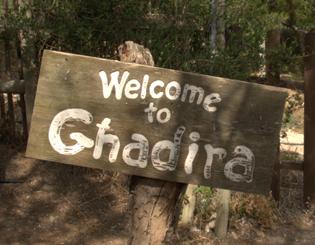
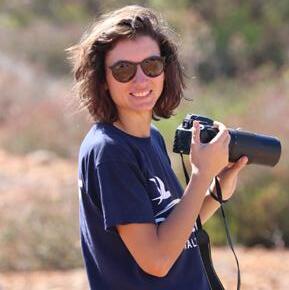
If you have any questions email: events@birdlifemalta.org
WORDS: Anastasiia Koroleva BirdLife Malta Volunteers & Events Coordinator
by
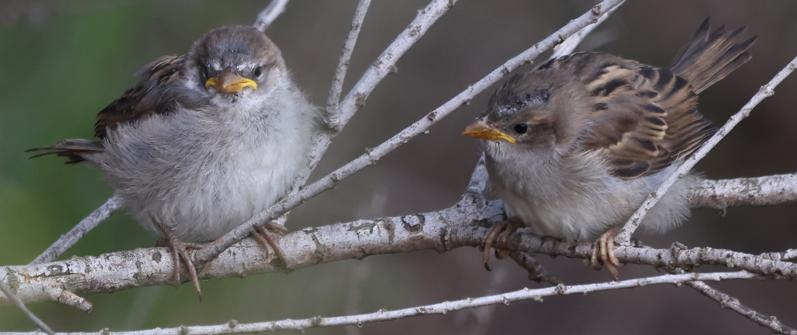

If it’s a hatchling – eyes closed, naked or barely feathered – it likely fell from the nest. Gently return the hatchling to its nest. If you can’t reach the nest, place the bird in a cardboard box near a bush or tree close to where it was found.
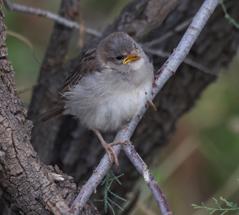
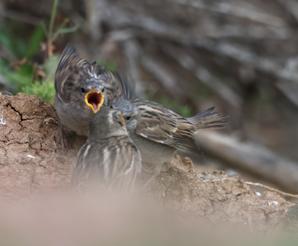
If it’s feathered and its eyes are open, it’s a fledgling! These young sparrows are learning to fly and often end up on the ground. This is a normal part of their development.


Fledglings are still cared for and fed by their parents, so they don’t usually need help. If you think the fledgling is in danger, gently move it to a higher spot like a ledge or tree branch.

Most do not survive in captivity. The best thing you can do is leave them
Remember, sparrows are wild animals – captivity and human contact can harm them. Don’t take fledglings home – they need their parents, not people.

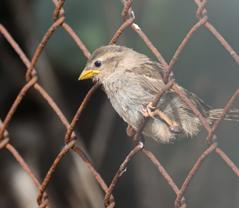
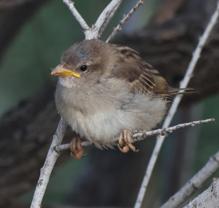
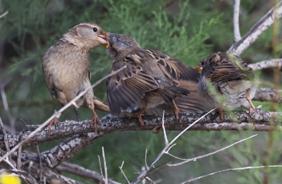

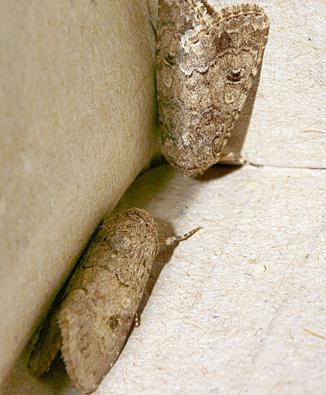
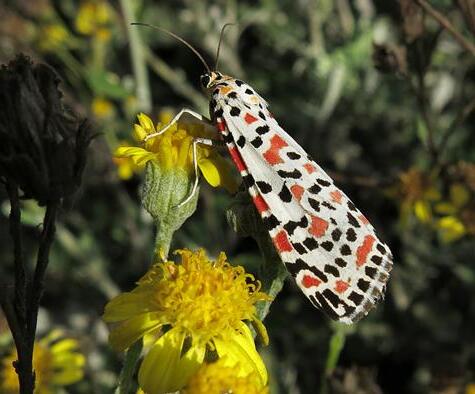
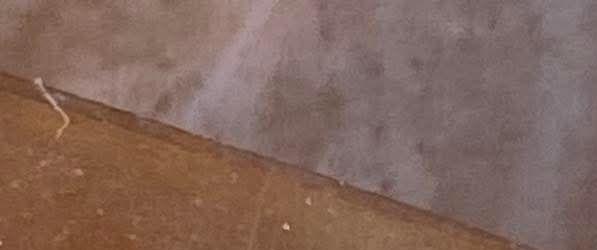
The Maltese Islands are home to an estimated 800– 1000 moth species. For several years BirdLife Malta has monitored this diverse group through monthly research carried out across our three wetland reserves, namely Simar, Salina and Għadira. This information is very important because moths are important food source for birds and other animals, both in their larval and adult stages.
The primary method used in this study is the Robinson trap, a standard tool for monitoring moth populations, behaviour, distribution and ecological roles. This contributes significantly to biodiversity conservation and ecological monitoring.
The trap is placed at sunset and collected at dawn. Equipped with LED UV bulbs, the traps utilise moths' phototactic behaviour— their natural attraction to light. While moths typically navigate using natural celestial light sources, they are also drawn to artificial light, allowing researchers to capture them safely for study.
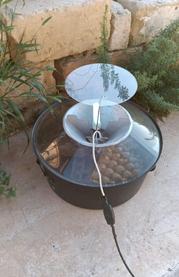
The moths fly in and settle harmlessly inside the trap container, this enables the researcher to inspect the insects without harming or even handling them. Each specimen is photographed, identified (by an expert assisting us) and released. The record is then logged into online databases, one specific to each reserve and another compiling data across all three sites. This enables long-term monitoring of species diversity and population trends.
In 2024, a total of 393 moths were recorded, representing 106 species. Springtime yielded the highest number of captures, notably Eupithecia phoeniceata (Rambur, 1834), Eilema caniola (Hübner, 1808) and Idaea seriata (Schrank, 1802). In autumn, a similarly high rate of capture was noted, particularly Cymbalophora pudica (Esper, 1785), Spodoptera exigua (Hübner, 1808) and Utetheisa pulchella (Linnaeus, 1758).
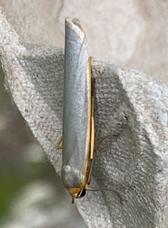
Simar recorded the highest species diversity among the three sites. This is most likely due to the habitat characteristics unique to the area – not least the richer flora – which could support a wider range of species.
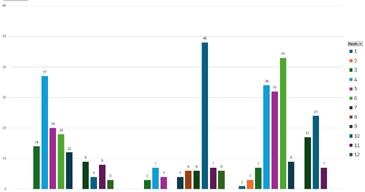
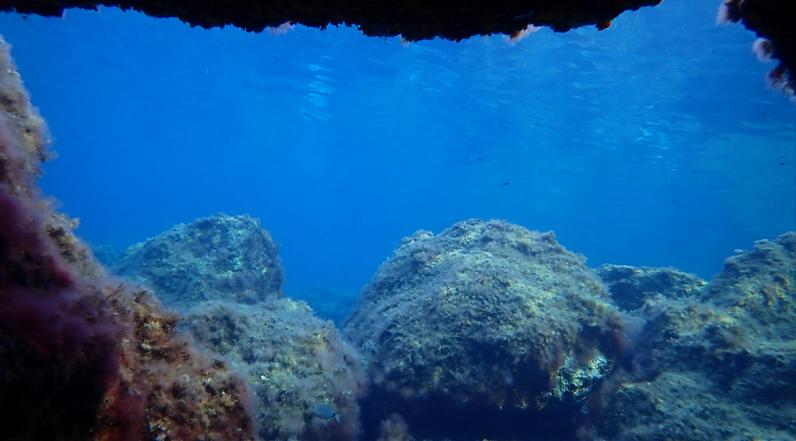
Set in the southern cliffs of our islands, Għar Lapsi offers a variety of habitats that make this spot a special one for snorkellers. Unlike other sheltered bays, Għar Lapsi is quite exposed to westerly winds, so for the best snorkelling experience, choose windless days or days with north-easterly, moderate winds.
The easiest access to Għar Lapsi’s snorkelling delights is via the swimmers’ zone: a sheltered “pool” created by the collapse of the roof of a limestone cave formed thousands of years ago.
Aron Tanti
Start your journey by scouring the shallow rock shelf for two blennies: the peacock blenny, living among thin algal filaments covering flat rock just under the water’s surface, and the rusty blenny, weaving among wave-smoothened dips in the shelf.
The pool itself is a port of call for a metropolis of fish shoals that swirl around the pool before exiting to the open sea. This is where you can expect anything, from regular shoals of salema porgy, bogue and various mullets, to barracuda or the recent alien rabbitfish
Fish life in the pool changes frequently, so you’ll need to decide how long to stay in this sheltered spot, before wending your way out to follow the cliffside. As you swim towards the pool opening, peer down into the crevices for moray eel, which frequently snake along the rock sides looking for prey.
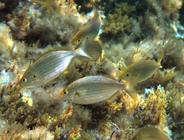
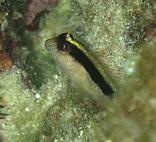
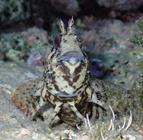
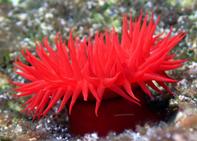
Turn right at the inlet’s mouth to explore the rocky shelf that greets you. The pocked surface is home to a variety of colourful regulars. One of the first to emerge from their hidey holes will be the molly miller, an inquisitive playful blenny whose antics could tie you to the spot as you watch them interact, mate, nibble your fingers, or bicker over a favourite hole.
Watch where you put your hands to steady yourself: madeira scorpionfish hide in plain sight among the crusty algae they blend in with. Also perfectly camouflaged in the same habitat is the combtooth blenny, which could easily be staring right at you till you suddenly make out its unmistakeable pouty profile.
As you continue your snorkel-crawl along the rock shelf, you will notice occasional deep crevices. Hold your breath and dive down to a couple of metres to discover the marine life that prefers shadier haunts: moray eels, bearded fireworms, and rarer blennies such as the longstriped blenny. Continue to alternate between the two habitats, as the shelf gradually becomes a sloping cliff-face.
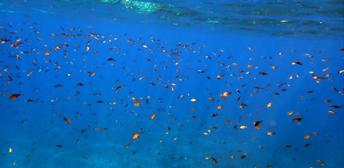
Making sure to keep close to the safety of the shoreline, turn your sights to the open water. Here you may see large shoals of shimmering banded sea-bream mingling with schools of damselfish, lazily feeding on food particules or plankton.
Such large gatherings of small fish are bound to attract predators. Look out for fast-moving, needle-like garfish picking off sand smelt as these change direction in a flash to avoid capture.
The seabed at Għar Lapsi lies below typical snorkelling depth, but if you can dip down a couple of metres you may spot the striking red flanks of the female parrotfish among the greycoloured males. These chunky fish graze coralline algae off rocky reefs with their strong “beaks” — a tough ridge of fused teeth. If you spot a stationary painted comber, look out for the common octopus it could well be attending for meal scraps.
Keeping an eye out for fishing lines from the clifftop, swim to the point where the cliff turns a corner and discover a distinct habitat. Fallen boulders create a habitat for a diversity of fish and invertebrates, making a perfect last leg of your snorkelling time
at Għar Lapsi. Make your way to the inlet, where the shallow seabed allows easy snorkelling into the nooks and crannies of rocky overhangs.
Clinging to the underside of these overhangs, you will find startling-red beadlet anemones, waving their tentacles in the early morning to catch floating prey. Mediterranean shore crabs scuttle above and below the sealine, while warty crabs skulk below it. Lush algal growth is at its most varied in this shallow inlet, with red, brown and green algae growing side by side.
Peer between stones and meet the tompot blenny, standing its territorial ground on top of large stones. Weaving between these stones, male ornate wrasse declare their feeding and mating areas, while peacock wrasse and five-spotted wrasse look for bivalves and other invertebrates among the algae.
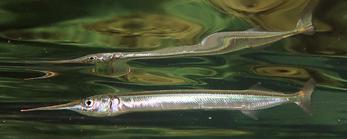
One of the special characteristics of Għar Lapsi is its scenic beauty. At any moment, if you lift your head above the surface, you might catch the lilting song of the blue rock-thrush, a fitting reminder of the uplifitng biodiversity of our southern cliffs.
WORDS & PHOTOGRAPHS by Desirée Falzon & Victor Falzon Naturalists and BirdLife Malta Field Teachers
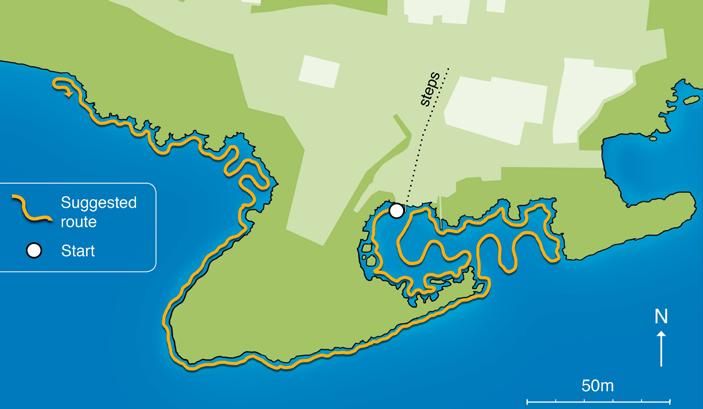

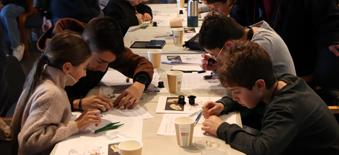
Event: Fur, Feathers & Bones: Dissection of Owl Pellets
Date: 1 March 2025 I Location: Salina Nature Reserve
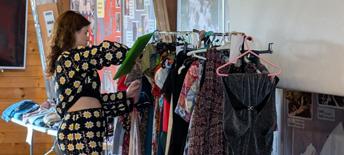
Thrift Pop-up
Date: 8 March 2025 I Location: Salina Nature Reserve
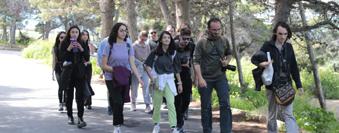
Date: 9 March 2025 I Location:
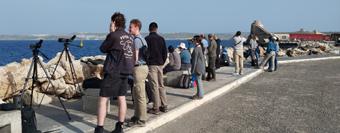
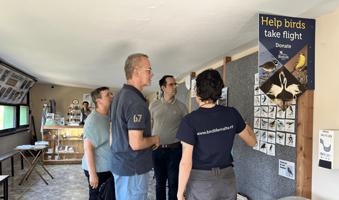
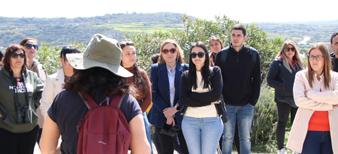
Dinja Waħda Coordinators Day
Date: 20 March 2025 I Location: Majjistral Nature and History Park
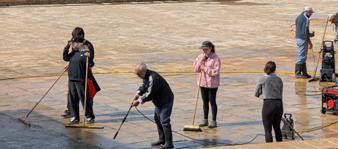
Event: Saltpans Cleanup
Date: 22 March 2025 I Location: Salina Nature Reserve
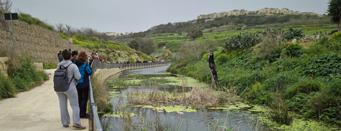
March

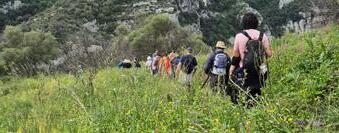
Date: 5 April 2025 I Location:
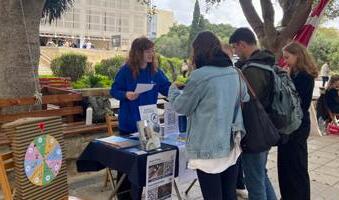
Date: 10 April 2025 I Location: University

Event: Walk for Nature 2025
Date: 12 April 2025 I Location: Salina Nature Reserve

Event: Wings & Rings
Date: 13 April 2025 I Location: Għadira Nature Reserve
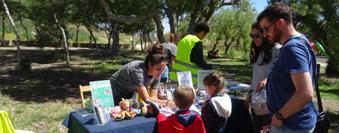
Event: Eggsploration

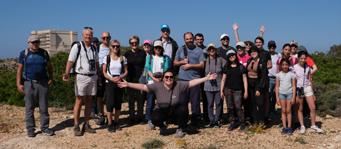
Event: Kemmuna Trip
Date: 1 May 2025 I Location: Kemmuna
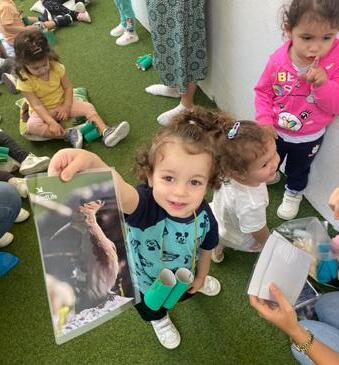
BirdLife Malta Day at La Bacchetta
Date: 19 May 2025 I Location: Santa

Date: 19 April 2025 I Location: Kennedy Grove
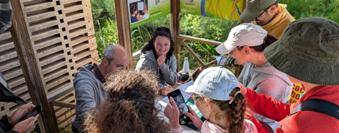
Event: Public Bird Ringing Session
Date: 26 April 2025 I Location: Salina Wetland
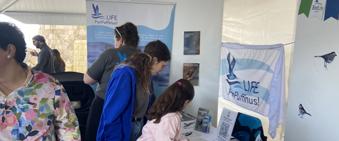
Event: Science in the Ċittadella
Date: 27 April 2025 I Location: Citadel, Gozo


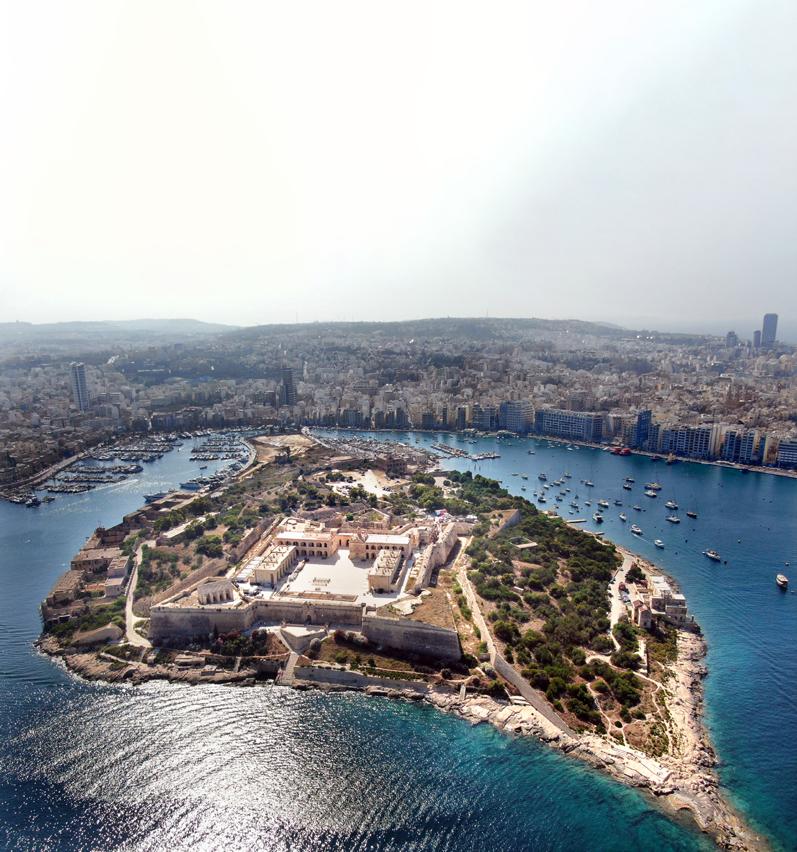
A coalition of NGOs, including BirdLife Malta, gathered over 29,000 signatures to petition the Government to turn Manoel Island into a 30 hectare nature and heritage park. Under mounting public pressure, the Prime Minister signalled readiness to renegotiate building concessions. The campaign Manoel Island: Post Għalina is proof that advocacy and community mobilisation can influence high-level political decisions. We are proud to have been part of this rare opportunity to turn plans for private apartment blocks into a green space for everyone to enjoy.
